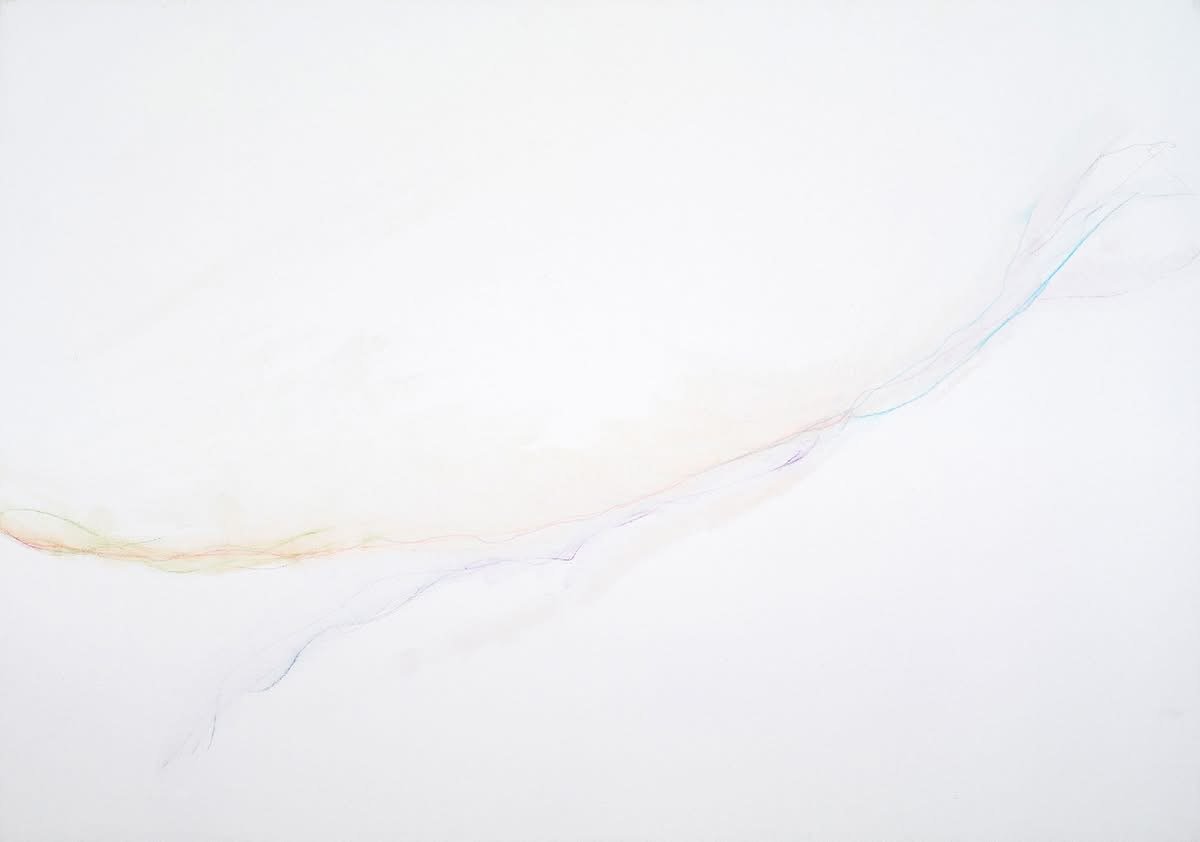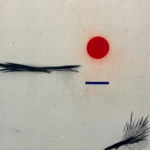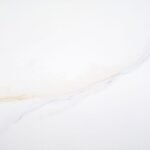[“The following copyrighted article is shared
with permission, and courtesy of theartpulse.com”]
Source link
An Article by MR (674 words, 4 min. read)
At Agial Art Gallery, from November 6 to December 20, Afaf Zurayk’s A Breath unfolds as a silent hymn to existence. Each canvas rests between inhalation and exhalation, between the appearing and the vanishing. White fields receive the gentlest movement of brush and line, forming what feels less like depiction and more like respiration. The room itself seems to breathe a slow, living rhythm of motion and stillness.
“A Breath,“ she writes,
“I asked to abstract and my brushes touched,
A fearless oneness,
A ray of light in motion.“
These lines reveal her method: painting as invocation, as a tender asking. Her abstraction is not intellectual but visceral, it emerges from a pulse, a surrender. The brush touches, and something awakens. Each stroke carries both solitude and communion, both control and letting go.
The Pulse of Stillness
Zurayk’s recent works exist in a fragile balance between gesture and pause. In some, a faint horizon of graphite drifts across an open surface; In others, a single curved line anchors a field of quiet white. The space is never empty, it quivers with potential, with the echo of what might come next.
She writes,
“A depth only savings fulfillments,
A mirror,
A welcoming breath
As rain after a dry spell.“
Here, the paintings become mirrors of the self, not mirrors of likeness, but of essence. The rain she speaks of, falls softly across her canvases, the pigments thin and translucent, like water meeting air. Through her restraint, she achieves plenitude; through her silence, resonance.

A Curation of Silence and Light
Saleh Barakat’s curatorial approach elevates Breath into a luminous meditation. To present an entire exhibition of white canvases requires both courage and sensitivity, a belief in the quiet power of what is almost invisible. Barakat arranges the works with a rhythm that allows air to circulate between them, giving each piece its own breathing space while maintaining a sense of continuity. The gallery becomes an architecture of calm, where light, reflection, and distance are as essential as the paintings themselves. His curatorial hand does not impose; It listens, balances, and amplifies the whisper of Zurayk’s vision. In this delicate choreography of white, the unseen becomes radiant.
Light as Tender Matter
Light, for Zurayk, is not illumination but emotion. It is the language through which thought dissolves into feeling. Her tones shift from pearl white to muted grey, from breath to heartbeat. The gallery becomes a space where the viewer slows down, adjusts, listens. The works demand presence, not interpretation. They are as much about looking as about being looked at. It is a reciprocal act of awareness.
“Life,“ she concludes,
“An interrupted space
In the process of
Becoming.“
In this line lies the soul of A Breath. The interruption, that pause between what was and what will be, is where meaning resides. It is the same pause between two breaths, where life gathers itself quietly before continuing.
The Continuum of Word and Image
Zurayk’s dual practice, painting and poetry, meets here in luminous harmony. Her poems are not commentary but companions to her canvases; each extends the other. In reading her verses besides the works, one senses the same movement of restraint, surrender, renewal. The rhythm of her words is the rhythm of her brush.
She does not separate the material from the spiritual. The line is breath, the pigment pulse. In this communion, painting becomes prayer, not of supplication, but of gratitude. A gratitude for existence itself, for the fragile beauty of being in time, for the simple act of becoming.
Between Breath and Light
Walkingthrough A breath is to move through intervals of awareness. Every surface holds both what is said and what remains unsaid. There is no conclusion, only continuation. There is a gesture, a shimmer, a whisper of motion. Zurayk’s work, gently framed by Barakat’s sensitive curation, invites us to stay in that interval, to listen to the sound of stillness, and to find in it the rhythm of our own breath.






